Browse Houses
Search Results: Returned 5516 records. Displaying results 4901 – 5000
| House name | Description | |
|---|---|---|
| Skehanagh | George Lloyd was living in a house valued at £16 at Skehanagh North in the mid 19th century.The Ordnance Survey Name Books note "Skehana" as the residence of George Richard Lloyd in 1840. In the 1870s Horatio M. Lloyd of Skehana, Templemore owned 182 acres in county Tipperary. Catherine Lloyd was resident in 1906. This house burnt down and the present building on the same site dates from the early 20th century. |

|
| Skreeny | Skreeny seems to have been built during the 1690s. It is recorded as a seat of the Cullen family by both Taylor and Skinner and Wilson in the 1780s. During the Famine period it was used as a temporary fever hospital. The townland was in the possession of the Earl of Leitrim by the time of Griffith's Valuation where the only buildings recorded area a gate house and offices, valued at £1 10s. Skreeny House is labelled as "in ruins" on the 25-inch Ordnance Survey map of the 1890s. The Irish Tourist Association survey of the 1940s recorded that it was "the ruins of one of the principal gentry seats in the area". | |
| Slacksgrove/Hollywood House | Slacksgrove is marked as a long building close to the shore of Slacksgrove Lake on the 1st edition 6 inch Ordnance Survey map (1836). It was named after the family who lived there in the 18th century. John Slack of Slacksgrove was High Sheriff of county Monaghan in 1758. Lewis records R. Jackson as resident at Slacke’s Grove in the 1830s. A later square house on the same site, known as Hollywood House, was built before Griffith’s Valuation of the mid-19th century. This house with an extensive farmyard was valued at £36. It was occupied by James Fiddes who held the property from Thomas Coote. Edward Fiddes and his daughter lived in the house in the early 20th century. Only the outbuildings of Hollywood House still remain. | |
| Slevoir | Lewis records R. Monsell as resident at Slevoir in 1837. The Reverend Francis Synge was the occupier at the time of Griffith's Valuation, holding the property from the representatives of Mr Steele. The buildings were valued at £34. The National Inventory of Architectural Heritage states that the present house was built in the Italianate style in the 1870s for Lieutenant Colonel J.F. Hickey by John McCurdy. In the early 1940s General Carlos J. Hickie was the owner and the house contained very beautiful furnishings and valuable family pictures according to the Irish Tourist Association surveyor. This house sold for over £3 million in 2000 and was offered for sale again in 2011. |
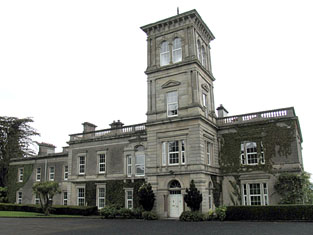
|
| Slievardagh | In 1906 John H. Lanphier held buildings valued at £18+ in the townland of Blackcommon part of the village of Commons, probably Slievardagh House. This house is not marked on the first edition Ordnance Survey map. |
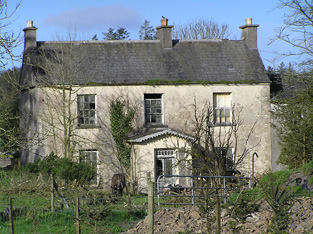
|
| Slieve Russell House | Slieve Russell House was a two storey Victorian lodge, built about 1880 for the Benison family. John Joseph Benison and family were resident in the early years of the 20th century. The house is now derelict. | |
| Sliganagh | At the time of Griffith's Valuation, Hugh Gray was leasing a property valued at £3 to Sarah Trimble, at Sliganagh, barony of Drumahaire. | |
| Smith Hill | Smithhill was in the demesne of The Palace at Elphin. It was the residence of the Reverend Oliver Jones, grandfather of Oliver Goldsmith, in the early 18th century. It was the home of Robert Jones Lloyd in the late 18th and early 19th century and of the Reverend John Lloyd in 1837. The house was unoccupied at the time of Griffith's Valuation when it was valued at £8 and held by Robert Lynch. The Ordnance Survey Field Name Books record that Goldsmith's father was born at Ardnagowna [or possibly Oliver himself, see http://en.wikipedia.org/wiki/Smith_Hill_(house)]. |
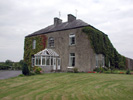
|
| Smithfield | Originally a Aylmer residence, later leased by the Smith family. The house was occupied by Richard Smith in 1814 and by R. Smith in 1837, later in the possession of the Fergusons. A 3 storey hand drawn house is depicted on the sale rental map of the Aylmer estate. Smithfield House is now the centre of a working farm run by the Lowe family and offers Bed and Breakfast accommodation. |

|
| Smithstown | Both Taylor and Skinner and Lewis refer to Smithstown as a seat of Viscount Powerscourt in 1778 and 1837. John O'Brien held the house and 117 acres from Edward Wingfield Stratford at the time of Griffith's Valuation. Weir writes that the house was demolished by the Land Commission in the 1940s.. | |
| Smithstown House | Ruane writes that the house was built by the Palmers and became a Royal Irish Constabulary barracks. It was the home of the Pugh family in the 1830s. The only building in the townland at the time of Griffith's Valuation, of more than £2 valuation, was the barracks. Sold in 1988 and now the home of Mrs Loretta Clarke Murray and family. |

|
| Smithville | Rev. M. Townsend was leasing this property to Eleanor Townsend at the time of Griffith's Valuation, when it was valued at £12 10s. | |
| Smithville [Yewstown House] | In 1840 the Ordnance Survey Name Books refer to Smithville "a commodious dwelling house", the residence of Mr. Boucher, though Peter Homes is mentioned as the proprietor. At the time of Griffith's Valuation, Aquilla Smith, MD, was leasing a property from the Holmes estate valued at £38. In addition Smith was leasing another property, valued at £15, to the Nenagh Poor Law Guardians, for use as an auxiliary workhouse. By the publication of the 25-inch Ordnance Survey map of the 1890s, a more substantial house at the site has become known as Yewston House. The building at the site now is known as The Manor and is in use as a nursing home. |
![Photo of Smithville [Yewstown House]](https://landedestates.ie/storage/img/orig/2843.jpg)
|
| Smorane House | Sampson French was leasing this property to Gibbs Ross at the time of Griffith's Valuation, when it was valued at £8 10s. A house still exists at the site. | |
| Snugborough | In 1786 Wlson refers to Snugborough as the seat of Mr Smith. Mrs. Helena Greaves was leasing this property to Richard Walsh in 1851 when it was valued at £10 10s. An extensive farmyard complex still survives at the site. |

|
| Snugborough | A property leased from the Brownes of Raheens, the O'Malleys built a house here in 1765, costing £900. It was badly damaged in 1798 and was recorded to be in a dilapidated state in the Ordnance Survey Name Books. It is labelled as Snugborough House on the 1st edition Ordnance Survey map of 1838 but is not labelled on the later 25-inch edition and nothing now remains. | |
| Snugmore | Snugmore House was being leased to William Newenham by John Daunt at the time of Griffith's Valuation, when it was valued at £10. It is no longer extant. | |
| Solsborough | In 1786 Wilson refers to "Sallborough" as the seat of Mr. Poe. T. Poe was residing at Salisboro in 1837. At the time of Griffith's Valuation (1850) James J. Poe held the property from the Court of Exchequer. The buildings were valued at £41. At the time of the 1852 sale James J. Poe was the tenant holding the property on a 7 year lease pending the cause of Crofts v Poe. Henry H. Poe of Solsborough owned 314 acres in county Tipperary in the 1870s. This house is now a ruin. |
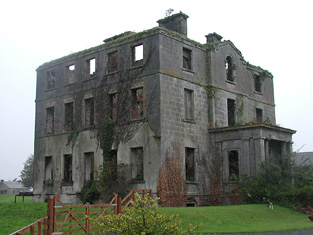
|
| Somerset | The National Inventory of Architectural Heritage states that this house was built in 1875. It appears to have replaced an earlier house also known as Somerset marked on the first edition Ordnance Survey map circa 1840. In 1841 the Ordnance Survey Name Books refer to Somerset as "a small demesne and good dwelling house, the residence of Mr. Going". It was the home of John O'Meara in the mid 1870s. In 1906 William H. O'Meara occupied a house valued at £12+ in the townland of Abbeville. |
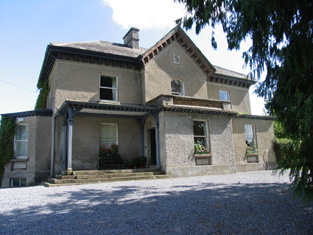
|
| Somerset Glebe | At the time of Griffith's Valuation William Seymour was leasing a property in the townland of Somerset, parish of Clontuskert, valued at £11 to Rev. Adolphus Drought. This property is now a ruin. | |
| Somerset House | At the time of Griffith's Valuation, Thomas Stratford Eyre was leasing a house valued at £20 to William Seymour. Slater refers to the house as the residence of Thomas Craddock in 1894. In 1906 the property at Somerset was held by Charles Seymour. The original house is not extant but there are extensive remains of estate architecture. |
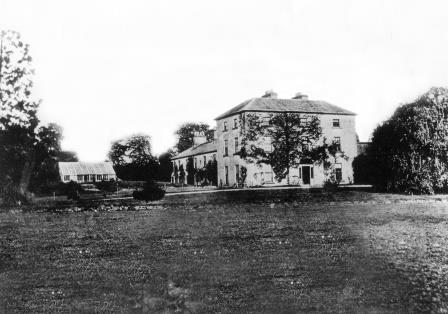
|
| Somerton | Somerton House appears to have been the residence of the agent to the Perceval estate. At the time of Griffith's Valuation the latter estate was owned by R.W. Hall-Dare. Somerton was then occupied by Christopher L'Estrange and was valued at £14. It is still extant. |

|
| Sonnagh | Walter McDonagh was leasing a property at Sonnagh, parish of Fohanagh, barony of Clonmacnowen, from the Clancarty estate at the time of Griffith's Valuation. He was also the occupier of a mill at Pollboy, valued at £95, in this parish. His estate was centred on Lowville in the barony of Kilconnell. A house still exists at the Sonnagh site. | |
| Sopwell Hall | Apparently named after an English property, Sopwell in Hertfordshire, which was inherited by the Sadleir family. In 1655 a Cromwellian soldier, Colonel Thomas Sadleir, was granted Kinelagh Castle, county Tipperary, which he renamed Sopwell Hall. This property remained in Sadleir possession until it was inherited by Mary Sadleir who, in 1754, had married Frederick Trench of Woodlawn, county Galway, the parents of the 1st Lord Ashtown. The present house was built by Mary's father, Francis Sadleir, in the mid 18th century. Wilson refers to it as the residence of Mr. Sadlier in 1786. Sopwell Hall was left to Francis Trench, brother of 1st Lord Ashtown, who was living at Sopwell Hall in 1814. In 1837 Lewis records the Trenches in possession and writes that "on the demesne are the ruins of the ancient castle formerly occupied by the Sadleir family". The Ordnance Survey Name Books, in 1840, refer to Sopwell as "a spacious building, the residence of Stewart Trench". At the time of Griffith's Valuation the 2nd Lord Ashtown, son of Francis, was occupying the house, valued at £40 and held by him in fee. By 1906 Sopwell was valued at £80 and occupied by the Honourable Cosby G. Trench. The Trench family were still resident at Sopwell Hall in the 1970s. In 1840 the Ordnance Survey Name Books noted that Sopwell was one of the largest demesnes in the country. |

|
| Sorrellhill | James Bennett was resident at Sorrel-hill, Templemore in 1814. This house is marked on the first edition Ordnance Survey map but looks larger in size on later maps. At the time of Griffith's Valuation, valued at £16.10 and held by Dudley Byrne from Philip Gowan. This house is still extant. | |
| South Park | In the 1770s Abbot Esq was residing at Rahanane close to Ballingarry. Wilson, writing in 1786, also refers to Rahanane as the seat of Mr. Abbott. The house is named South Park on the 1st edition Ordnance Survey map and was the home of a branch of the Atkinson family, occupied by Anthony Atkinson in 1814 and by C. Atkinson in 1837. Charles Atkinson held the property from Lord Ashtown at the time of Griffith's Valuation when the house was valued at £22. The estate of Edward Evans of Southpark, 174 acres in the barony of Lower Ormond, was advertised for sale in December 1859. South Park is still extant. |
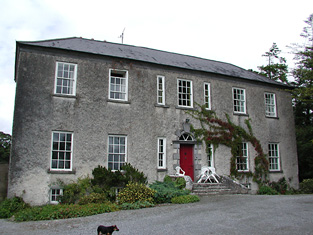
|
| South Park | Patrick Balfe was occupying the residence valued at £45, at Southpark, barony of Castlereagh, at the time of Griffith's Valuation. In 1814 it was the seat of Michael Balfe who was also resident there in 1837. Gomley states that Daniel O'Connell was a frequent visitor to the house as his sister was married to one of the Balfe family. Slater refers to it as the seat of Major Michael Balfe in 1894. In 1783 Taylor and Skinner noted the property as the seat of Gen. Gisborne. In 1786 Wilson mentions South Park as "the fine seat of the late General Gisborne, now of Mr. Corr". Sadleir notes that Colonel Gisborne was MP for Lismore, in county Waterford in the 1770s and died in 1778. Skeffington Gibbon writes that South Park was built by General Gisburn on the Malone estate and was, in the late 1820s, in the possession of a grazier named Balfe. South Park House is no longer extant having been burned in 1921 but there are extensive remains of the walled garden and stable yard. |

|
| South Park | At the time of Griffith's Valuation, Lawrence Kerrans was leasing a property valued at £11 from the Clonbrock estate at Kilglass, parish of Ahascragh. It is not named on the first edition Ordnance Survey Map but is labelled South Park on the 25-inch edition produced in the 1890s. The house is still extant and occupied. |

|
| Southhill | In 1840 the Ordnance Survey Name Books refer to South Hill House as "a good dwelling house, the residence of Mr. J. Manders" though Patrick Clark is mentioned as the proprietor. It was valued at £23+ in the mid 19th century, occupied by John Vincent and held from the Honourable O.F.G.Toler. At the time of the 1855 sale the house was untenanted. This house no longer exists. | |
| Spa A | Thomas Dee was leasing this property from the Bagwell estate at the time of Griffith's Valuation, when it was valued at £14. | |
| Spa Hill | A home of the Oliver family, occupied by Charles Deane Oliver in 1814 and by William Oliver in 1837 and at the time of Griffith's Valuation. The buildings were valued at £23+ and William held them from the Trench/Gascoigne estate, with a corn mill. |

|
| Spa Ville | Cuffe Wall was leasing this property to Mrs. Susan Vowel at the time of Griffith's Valuation, when it was valued at £15 10s. It is labelled Spaville on both the 1st edition and later 25-inch edition Ordnance Survey maps. A house still exists at the site. | |
| Spamount (Killaghtee) | Sarah Stephens was leasing this property from Reverend Samuel Montgomery’s estate at the time of Griffith’s Valuation. The house was valued at £12. Lewis recorded it as the seat of M. Steevens in 1837. In 1911 the house was owned by Francis P. Henry. It is labelled Spamount on all Ordnance Survey maps. Buildings are still extant at the site. | |
| Spear Vale/Vale House | In 1814, Ambrose Leet refers to William Spear of Spear Vale, Bailieborough. In 1837, Lewis described the home of W. Spear as comfortable with an extensive bleach green about one mile from the town. The Reverend Frederick FitzPatrick occupied the house in the mid-19th century holding it from William Spear. The buildings had a rateable valuation of £12. This house is no longer extant. | |
| Spear Vale/Vale House | In 1814, Ambrose Leet refers to William Spear of Spear Vale, Bailieborough. In 1837, Lewis described the home of W. Spear as comfortable with an extensive bleach green about one mile from the town. The Reverend Frederick FitzPatrick occupied the house in the mid-19th century holding it from William Spear. The buildings had a rateable valuation of £12. This house is no longer extant. | |
| Spencer Park | A house occupied by a junior branch of the Burrishoole family descended from Patrick O'Malley. They held the house during the second half of the 18th century and much of the 19th century from the Earls of Lucan. By the time of Griffith's Valuation it was occupied by John C. Larminie. In 1858 Larminie sold his interest in the O'Malley's lease of Spencer Park, which had been renewed on 7 Oct 1842 for three lives or 31 years. The Freeman's Journal reported that it was purchased in trust by Mr. Jordan. The site is now occupied by modern housing. | |
| Spiddle House | The 1st edition Ordnance Survey map shows a house known as Bohoona Lodge on a site adjacent to the present Spiddle House. The latter property appears on the 25-inch map of the 1890s. At the time of Griffith's Valuation, John Farrer was leasing a property in this townland from Martin Morris. It was valued at £8. The house has recently been restored. |

|
| Spital Mill House | William Harris was leasing Spital Mill and its house to Charles Connell at the time of Griffith's Valuation, when the whole complex was valued at over £50. The mill buildings are labelled "in ruins" on the 25-inch map, published in the 1890s. A modern industrial complex is now located close to the site. | |
| Spitalfields | Dating from the mid 18th century, Hajba writes that this house was built by Christopher Waggett, nephew and son-in-law of George Crofts of Velvetstown House. By 1814 it was occupied by Richard Purcell and at the time of Griffith's Valuation by Fitzgerald O'Keeffe who held it from the Earl of Egmont. It was valued at £20+ at this time. In the 1870s George Crofts Harris of Spittalfields owned 591 acres in county Cork. The property of the O'Brien family in the 20th century, run as a guest house. |

|
| Spotfield | Spotfield appears to have been the property of the Phibbs family in the 19th century but in the 18th century may have been occupied by the White family who had intermarried with the Phibbs. At the time of Griffith's Valuation, it was leased by John Phibbs to Eccles Phibbs. The house was then valued at almost £4. McTernan notes that the house was demolished in the latter part of the twentieth century. | |
| Spray Field House | Edward Daly was leasing this property from Anne Stubman at the time of Griffith's Valuation, when it was valued at £13 10s. It is still extant. | |
| Spraymount | Sophia Herranc was leasing this property to Anne Raymond at the time of Griffith's Valuation, when it was valued at £5 5s. An adjacent property was being leased by Anne Raymond to William Hartnett, valued at £6. Lewis refers to "Spraymount" as the seat of Capt.W, Raymond in 1837. It is no longer extant. | |
| Spring Field (Clonmel) | Francis Prittie was leasing this property from the representatives of E. Labarte in 1850. It was then valued at £32 10s. It is still extant and occupied. |
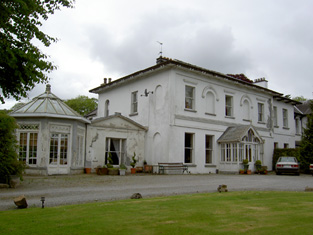
|
| Spring Garden | Spring Garden was a Nugent house in the parish of Tynagh, valued at £10 at the time of Griffith's Valuation. It had earlier belonged to the Persses but had been sold by them in the early 1850s. In 1906 this was the property of Hon. Richard A. Nugent. It is described as "in ruins" on the 25-inch Ordnance Survey map of the 1890s. | |
| Spring Grove | This house was the home of Arthur Bastable in 1814. This house was part of the Creagh estate for sale in July 1853, Christopher Carleton, "a lunatic", was the leasee. Unoccupied at the time of Griffith's Valuation when valued at £9.10 shillings. The representatives of Thomas Harris were the immediate lessors. A house is still extant at the site. | |
| Spring Hill | Richard Chute was leasing Spring Hill to Penelope Chute at the time of Griffith's Valuation, when it was valued at £23. Bary notes that Richard Chute enlarged and extended an existing house here in 1816. Lewis records the house as the seat of Captain Chute in 1837. The Ordnance Survey Name Books note that the original house was thatched but the house existing in the 1830s was "two stories high and neatly built". In the later nineteenth century, the Linden family, agents to the Chutes occupied Spring Hill and remained into the twentieth century. It is now ruined and overgrown. |
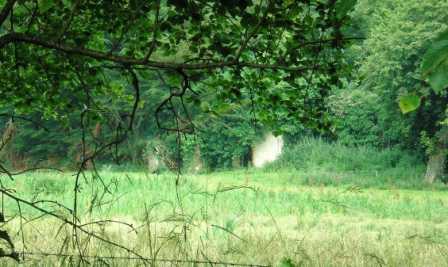
|
| Spring Hill (Gaultiere) | At the time of Griffith's Valuation, John Stephens was leasing this property from the Bolton estate when it was valued at £24 11s. Buildings, though perhaps not the original ones, are still extant at the site. | |
| Spring Hill House (Inishowen) | John Cochrane held Springhill in fee at the time of Griffiths Valuation, when it was valued at £14 10s. A building is shown at the site on the 1st edition Ordnance Survey map of the 1830s but is not named. A much larger building, labelled Springhill House appears on the 25-inch map of the early 20th century. A house is still extant at this location. | |
| Spring Lodge | Rev. Arthur Rowan was leasing this property to Robert Bell at the time of Griffith's Valuation, when it was valued at £15. Lewis records Spring Lodge as the residence of F.J. Martelli in 1837. Bary states that this is another of the houses built by Peter Thompson in the 1820s. Rowan was married to his daughter Alicia and they lived at nearby Belmont. Spring Lodge is still extant. | |
| Spring Lodge | A sporting lodge on the Aldworth estate named Spring Lodge on the first Ordnance Survey map. Occupied by Bartholomew Verling in the mid 19th century, who held the house valued at £10+ from Jane Williamson with 83 acres. This house, later known as Oxclose, is now a farm residence. |

|
| Spring Lodge/Springfort | Dickson Esq was occupying a house at Ballybronoghe in the 1770s and in 1786. Spring Lodge was occupied by George Massey at the time of Griffith's Valuation and held from the Court of Chancery. George Massey was possibly the younger brother of the 3rd Lord Clarina. It is labelled Spring Lodge on the 1st edition Ordnance Survey map but as Springfort on the 25-inch edition of the 1890s. It is still extant and occupied. |

|
| Spring Mount | J. White was living at Spring Mount in 1837 and at the time of Griffith's Valuation Robert W. White was the occupier, holding the property from William Scully. The house was valued at £17. The Whites were still occupying Spring Mount in the 1870s. |

|
| Spring Park | In the mid 19th century Benjamin Armitage occupied a house valued at £10 in Gortnagrann which he held with 243 acres from William Woods. The Ordnance Survey Name Books note it as being occupied by Mr. Armitage in 1841. The site is now occupied by farm buildings. | |
| Springfield | The Phibbs estate owned several houses as well as the townland of Springfield or Magheralgillerneeve, barony of Carbury at the time of Griffith's Valuation. One house, valued at £12, was being leased by John Mullan. | |
| Springfield | Weir writes that the Morice family probably built this house which was located on the Wood estate. It is recorded as the residence of Henry Wilson in 1814 and of F. Morice in 1837. Griffith's Valuation records that Francis Morice held the property from George A. Wood in the mid 19th century. The house was valued at £28. This house which was renovated is still inhabited. | |
| Springfield | The seat of the Norcott family in the 18th and 19th centuries, occupied by Hugh Norcott in 1814 and by James Norcott at the time of Griffith's Valuation when the buildings were valued at £18. The property was held from the Viscount Doneraile at this time. Sold to the Davisons in 1908, it remained in their possession for much of the 20th century. The house is still occupied. |

|
| Springfield | The home of a branch of the Boles family in the 19th century, occupied by John Boles in 1814 and the Reverend William Boles in 1837 and in the early 1850s. The house was valued at £16 and held from Foulke S. Greville. Spotiswood Boles of Springfield owned 540 acres in county Cork in the 1870s. In 1906 occupied by William Bowles. The house was derelict in the early 21st century. |
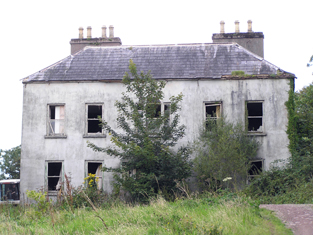
|
| Springfield (Portlaw) | Robert Shaw was leasing this property from the Medlicott estate in 1850 when it was valued at £39. He was the director of some of the industrial enterprises in Portlaw. Springfield is still extant and occupied. |
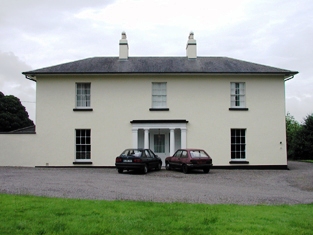
|
| Springfield Castle | Originally a Fitzmaurice residence adjoining a tower-house of the Fitzgeralds, this house passed by a marriage in 1775 to the Deane family, Lords Muskerry. It became their main residence in the late 18th century and throughout the 19th century. In 1786 Wilson refers to it as " a very fine seat with extensive demesnes". At the time of Griffith's Valuation the Honourable Robert Fitzmaurice Deane was residing at Springfield which was valued at £45. The house was burnt in 1923 and a 19th Gothic wing was made into a new house, which may now be rented as self catering accommodation. |

|
| Springfield House | At the time of Griffith's Valuation, John Keogh was leasing a house at Cultycuneen, barony of Boyle, valued at £13, to Joseph Backhouse. Keenahan and others state that this house was built by the Backhouse family in the 1790s. It remained in the family until the mid twentieth century. It is still extant and has been recently refurbished. | |
| Springfield House | 18th century two-storey thatched house, described in 1863 as a house of ancient construction, still occuppied by the McDermott family in the early 20th century. At the time of Griffith's Valuation, it was occupied by Owen McDermott who was leasing from William McDermott and Glasgow Connolly and was valued at almost £12.. Portion of the house is still extant. |
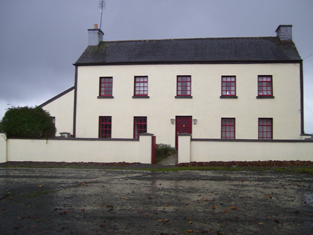
|
| Springfield House (Tipperary) | In 1786 Wilson refers to Springfield as the seat of Mr. English. By the time of Griffith's Valuation, the townland was part of the Smith-Barry estate and the house was valued at almost £4. It was occupied by Nicholas Sadlier at the time. A subtantial farm occupies the site now. | |
| Springfort | Dating from the very early 18th century, Springfort was the home of the Vowell family in the 18th century but Mr Cox is recorded as the proprietor in the late 1770s. By 1837 the Reverend Jonathan Bruce was resident. In the early 1850s William Carroll occupied the house holding the property from William Cox. The buildings were valued at £11+. This house was still extant in the 1980s when it was the home of the Cagneys. | |
| Springfort Hall | A branch of the Foott family were resident at Springfort from the early 18th century. The house was occupied by James Foot in 1814 and by [his grandson] another James Foote in the early 1850s, who held the property from the Earl of Limerick. Hajba writes that Springfort Hall was bought by Charles W. Wyatt in 1854 and sold again four years later to Captain Spencer Stewart, a grandson of the 7th Earl of Galloway. Springfort remained in the possession of the Stewart family until the beginning of the 20th century. It was leased to Commander Hans Thomas Fell White in 1895. It now functions as a country house hotel. |

|
| Springhill | This house was a Wakeham home from at least the mid 1770s. William Wakeman was resident at Springhill in 1814 and W.J. Wakeham in 1837. Joseph B. Wakeham held Springhill in fee at the time of Griffith's Valuation when the buildings were valued at £15+. | |
| Springhill | Occupied by Dr Samuel Hemphill and held by Samuel Hemphill Esq in fee at the time of Griffith's Valuation when the house was valued at £5.15 shillings. |

|
| Springhill | Springhill was occupied by Francis Goodwin in 1814 and by Thomas Goodwin in 1837. By the time of Griffith's Valuation Bartholomew Donohoe was leasing the townland from the Palmer estate but the buildings were only valued at 10s. Springhill is labelled as "in ruins on the 25-inch map of the 1890s and there is no trace of it now. | |
| Springhill House | William Daunt was leasing this property from William H. Daunt at the time of Griffith's Valuation when it was valued at £17 and included coal stores. It is still extant and in use. |
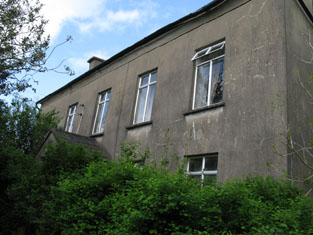
|
| Springlawn | Occupied by John W. Maunsell at the time of Griffith's Valuation and valued at £5. This house is no longer extant. | |
| Springmount | In 1837 and at the time of Griffith's Valuation this property was occupied by Samuel McCarthy. Valued at £19.10 shillings it was held from Lady Carbery's estate. There is still an extant house at the site. | |
| Springmount | Located on the Seward estate, occupied by A. O'Connor in 1814 and leased by him to William Creagh who was the occupier in the early 1850s. The house was valued at £22. Members of the Seward family owned this property until the late 19th century. For a time it belonged to the Duhallow Hunt and is still a family residence. | |
| Springmount | Richard S. Croker was the proprietor of this townland at the time of the first Ordnance Survey and Springmount was the residence of William Brown. By the time of Griffith's Valuation Gerard Barry held the house and 56 acres in fee. | |
| Springmount (Dungarvan) | At the time of Griffith's Valuation, George Keily was leasing this property from John Keily when it was valued at £13 10s. In 1837 Lewis had referred to it as the seat of T.E. Kelly. Extensive modern building has taken place at the site. | |
| Springmount or Carhoo House | At the time of Griffith's Valuation, William Beamish was leasing this property from the Earl of Bandon's estate, when it was valued at £11 10s. On the 25-inch map, published in the 1890s, it is labelled Carhoo House. A house and farm buildings are still extant at the site. | |
| Springvale | This house was ccupied by Roger Bourke in 1814 and by Roger S. Bourke in 1837. Roger Burke was married to a sister of Garret Nagle of Ballinamona. William Baily was resident in the early 1850s and held the property from the Earl of Kingston. The buildings were valued at £14.10 shillings. Grove White writes that Springvale was purchased by George Grehan of Clonmeen in 1855 and John J. Therry, his agent, lived there. In 1942 the Irish Tourist Association noted it as the residence of Mrs. Helen Clancy, a descendent of Therry. Although abandoned for some years in the 20th century the house has now been restored and is lived in again. |

|
| Springvale | The OS Name Books mention the existence of Springvale House in the townland of Lisheenagat together with some plantation and ornamental ground. At the time of Griffith's Valuation, Francis Lynch was occupying a property at Lisheennagat, barony of Leitrim, valued at £9. In 1906 this property was owned by Michael Lynch. The original house is not extant though some estate buildings remain. | |
| Springvale | Springvale was noted by Lewis as the home of Henry Joseph Blake in 1837. At the time of Griffith's Valuation the house was leased by Henry Blake from Joseph H. Bath and was valued at £8. A substantial corn mill in the townland, valued at £25, was leased by Henry Blake to Patrick Tierney at the same time. The house was later the residence of the Mayne family. It is still extant and occupied. The mill building is also still visible. |
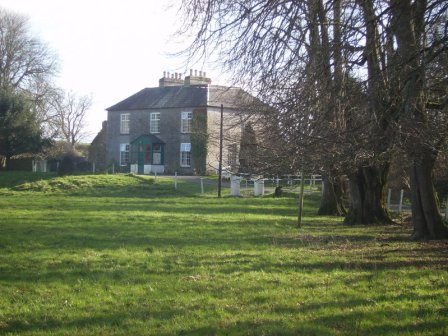
|
| Springville | Thomas S. Fleming was leasing this property to Richard Long at the time of Griffith's Valuation, when it was valued at £7 15s. A house is still extant at the site. | |
| Springville | Originally owned by a family named Minton who sold the property to the Wises of Cork city in the 1840s. It was then leased to Charles Daly who occupied the house valued at £5 at the time of Griffith's Valuation. Grove White writes that Daly spent a large sum of money reconstructing the house. Later occupied by O'Briens and Bolsters, still extant and lived in. |

|
| Sprucehill House (Kilconnell) | Sprucehill House is noted as the residence of Samuel Harrison in 1814. By the time of Griffith's Valuation the occupied property in this townland is a herd's house, part of the Longworth estate and valued at £2. Sprucehill House is described as "in ruins" on the 25-inch Ordnance Survey map of the 1890s. | |
| Spud Villa | This house is marked on the first edition Ordnance survey map. Anne and Jane Wise occupied a house in the townland of Mount Desert valued at £38 and held from Thomas Wise in the mid 19th century. | |
| Squince House | At the time of Griffith's Valuation, John F. Townsend was leasing this property to Alexander Donovan, when it was valued at £9 10s. It is described as "in ruins" on the 25-inch Ordnance Survey map of the 1890s. In 1945 the Irish Tourist Association Survey noted that traces of the old walls and gardens of the O'Donovan property could still be seen but that the site was now occupied by a modern two-storey house, the residence of the Brown family. | |
| Sraduff | Taylor and Skinner record Antisell Esq as the proprietor of Straduff in the 1770s. T. Antisell occupied Sraduff in 1837 and Christopher Antisell was resident in a house valued at £10+ in Sraduff in the early 1850s. The house was valued at £15+ in 1906 and was held by Monsell Antisell with 342 acres of untenanted land. This house is now a ruin. | |
| Srahnamanragh | A sporting lodge built circa 1850 and occupied by William Wilks at the time of Griffith's Valuation when the buildings were valued at over £12. Buildings still exist at the site. | |
| Sralea House | At the time of Griffiths Valuation, Thomas Tully was leasing a property at Sralea, barony of Moycarn, valued at £8, to James Seyer. Modern buildings exist at the site. now. | |
| Srue | Occupied by Chris O'Flaherty in 1814 and marked on the first Ordnance Survey map 1838 in a triangle of land near the shore of Lough Corrib. Possibly built as a steward's or agent's house. It was listed as a herd's house by the time of Griffith's Valuation when it was held by the Law Life Assurance Society in fee. Remnants of the garden walls and of the farm buildings still remain. |

|
| Srugreana Abbey | Daniel McCarthy was occupying Srugreana Abbey at the time of Griffith's Valuation, when it was valued at £9. In 1894 Slater notes it as the seat of Samuel T. McCarthy. In the 1940s the Irish Tourist Association Survey described it as "a large modern residence" fornerly that of the late Samuel T. McCarthy, a judge in India and later editor of the Kerry Archaeological Magazine. Bary indicates that this property was held by descendents of the McCarthy Mor family, owners of this area before the seventeenth century confiscations, who continued as tenants of the Lansdowne estate. The property was sold in the 1930s and demolished later in the twentieth century. | |
| St Anne's Hill | Richard Barter occupied a house valued at £55 in the townland of Kilnamucky at the time of Griffith's Valuation. St Anne's Hill is marked on the first Ordnance Survey map in this townland. By the 1890s this property had become absorbed into a complex of buildings labelled Hydropathic Establishment. The National Inventory of Architectural Heritage notes that most of the complex is now in ruins though Maranatha House survives as a residence. |

|
| St Audries | An 18th century house on the shore of Saleens Lake on the outskirts of Castlebar, named after the home of the 1st Countess in Somerset, England. St Audries was leased to Owen Lindsey in 1769 and his family maintained an interest in the property and the farm at Drumsheen until the early 19th century. The Reverend Archdeacon Warburton was living in the house in 1814. By the time of the first Ordnance Survey the house was in ruins. | |
| St Brendans | Occupied by the Honourable Thomas ffrench from the 1830s to 1850s who held the house from the Honourable Martin ffrench. It is now almost ruinous. |
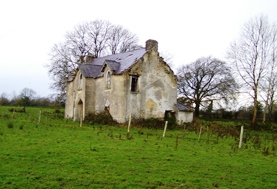
|
| St Catherines | An O'Callaghan property from the 18th century, George O'Callaghan was residing at St Catherines in 1814 and D. Sampson in 1837. Burkes 1904 records George's brother Edward "of Coolready" and he was married to a Miss Sampson. At the time of Griffith's Valuation the house was unoccupied and Ralph Westropp was the immediate lessor. The buildings were valued at £24. Only the servants' quarters now remain and have been converted into a family home. |

|
| St Catherines | Marked on the first Ordnance Survey map as Gortaclob House and on the later 25-inch edition as St. Catherines, this house was occupied by Francis McNamara Calcutt in the mid 19th century, valued at over £20 and held by him in fee. It is no longer extant. | |
| St Davids | Lewis refers to the fishing lodge of the Very Reverend Gilbert Holmes, Dean of Ardfert, "beautifully situated on the banks of the Shannon". At the time of Griffith's Valuation, the lodge was valued at £13.10 shillings, occupied by B. W. Holmes and held from John D. and William Kellett. This fishing lodge was altered in the 1860s and renamed St Davids. It remained in the possession of the Holmes family until the 1980s and now functions as a guest house and restaurant. It was offered for sale in 2011. |
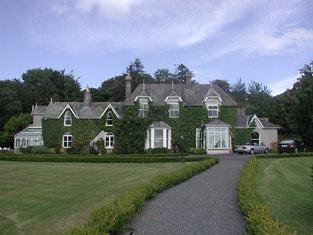
|
| St Johnstown | St Johnstown originally belonged to Matthew Jacob, whose only daughter and heir married Richard Pennefather of New Park in 1782. Wilson refers to it as the seat of Mr. Jacob in 1786 but their second son Matthew J. Pennefather was resident at St Johnstown in 1814. In 1837 Lewis records St Johnstown Castle as "consisting of a high square tower in good preservation, [it] is the property of James Millet Esq who has a modern house in its immediate vicinity". The buildings were valued at £31+ in the early 1850s, James Millet was still the occupier holding the property from Stephen C. Moore. | |
| St Kevinsfort | St Kevinsfort was occupied by William Massey [William Creagh Massy?] at the time of Griffith's Valuation. The buildings were valued at £15.17 shillings and held from Usher Beere. In 1840 the Ordnance Survey Name Books refer to the house as the property of Mr. Massy. |

|
| St Swithin’s Cottage/Drumbar House | St Swithin’s Cottage is named on the first edition six inch Ordnance Survey map (publ. 1837). It was located in the demesne surrounding Farnham House and was later extended by the addition of another block. Abraham Brush, who was the estate agent, lived here in the mid-19th century, when the buildings were valued at £20. By the early 20th century the building was known as Drumbar House. It continues to be a residence. | |
| St. Brendan's | Archdeacon Butson is listed as the occupier of the house in Glebe townland in 1855 when it was valued at £25. It is labelled St. Brendan's on both the 1st and 25-inch edition Ordnance Survey Maps. This house is no longer extant. |
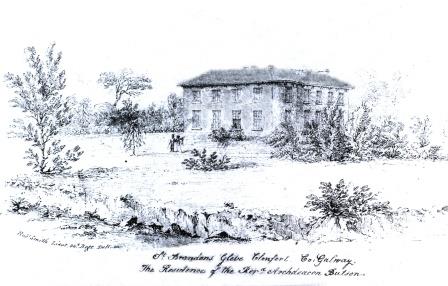
|
| St. Cleran's or Issercleran | Issercleran or St.Clerans was the home of the Burke family who built the house c.1784. At the time of Griffith's Valuation it was owned by John Hardiman Burke and was valued at £45. In 1906 it was the property of Anne Maxwell (nee Burke) and was valued at £46. It was sold in the 1950s and became the home of film director, John Huston. Up until 2008 it functioned as a luxury hotel owned by the Griffin Group. |

|
| St. Ernans | John Hamilton held St. Ernans in fee at the time of Griffith’s Valuation when the building complex was valued at £46 as well as a mill valued at £28. In the later 20th century the property functioned as a hotel. The National Inventory of Architectural Heritage suggests it was built in the 1820s but extended and modified later in the nineteenth century. It is still extant. |
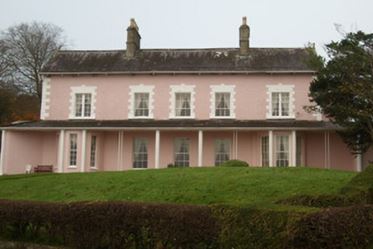
|
| St. Helens [Townsend Lodge] | James H. Todd was the occupier of this property at the time of Griffith’s Valuation, when it was valued at £17 10s. He was leasing it from a Kennedy lessor. The house is labelled as Townsend Lodge on the 1st edition Ordnance Survey map but as St. Helens on the 25-inch edition of the early 20th century. In 1837 Lewis had recorded this property as the seat of a Colonel Downing. Now used as a business premises. |

